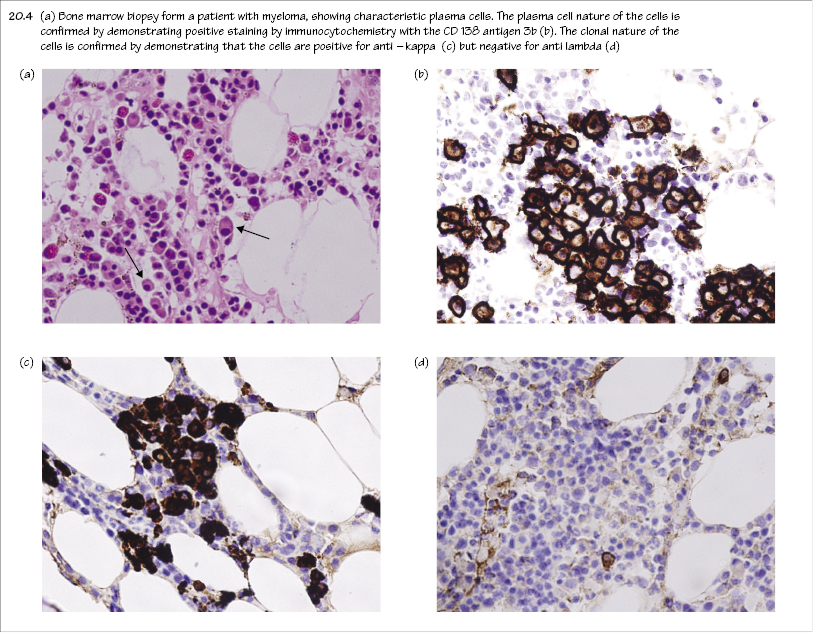
Neoplasia
Haematological malignancies (Table 20.1) are thought to arise from a single cell in the bone marrow, thymus or peripheral lymphoid system that has undergone one or more genetic change (somatic mutation) leading to malignant transformation. Successive mitotic divisions give rise to a clone of cells derived from the parent cell. Further mutations may give rise to subclones (clonal evolution). Transformed cells proliferate excessively and/or are resistant to apoptosis. They are often ‘frozen’ at a particular stage of differentiation. ‘Acute’ haematological malignancies are those that appear and progress over a short timescale (days or weeks) and the tumour cells are usually morphologically immature (‘blasts’). They require immediate treatment. Chronic haematological malignancies appear and may remain stationary or progress over a longer timescale (months or years), and the tumour cells are often difficult to distinguish morphologically from normal cells; they may remain indolent and do not always require treatment.
Table 20.1 Classification of haematological malignancies (major types)
| Acute | Chronic | |
|---|---|---|
| Lymphoid | Acute lymphoblastic leukaemia | Chronic lymphocytic leukaemia and variants |
| Non-Hodgkin lymphoma (many different types) | ||
| Hodgkin lymphoma | ||
| Multiple myeloma and variants | ||
| Myeloid | Acute myeloid leukaemia | Chronic myeloid leukaemia |
| Myelodysplasia | ||
| Myeloproliferative disorders (polycythaemia vera, essential thrombocythaemia, primary myelofibrosis) |
Causes of neoplasia
Neoplasia is caused by a complex interaction between genetic and environmental mechanisms (Fig. 20.1).
Stay updated, free articles. Join our Telegram channel

Full access? Get Clinical Tree




